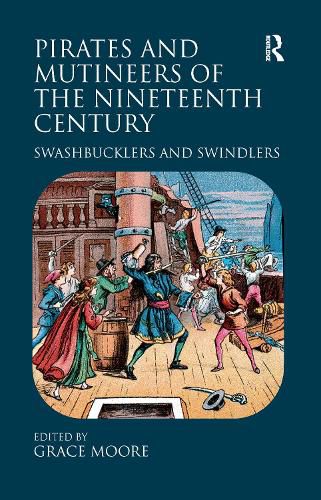Readings Newsletter
Become a Readings Member to make your shopping experience even easier.
Sign in or sign up for free!
You’re not far away from qualifying for FREE standard shipping within Australia
You’ve qualified for FREE standard shipping within Australia
The cart is loading…






The first volume devoted to literary pirates in the nineteenth century, this collection examines changes in the representation of the pirate from the beginning of the nineteenth century through the late Victorian period. Gone were the dangerous ruffians of the eighteenth-century novel and in their place emerged a set of brooding and lovable rogues, as exemplified by Byron’s Corsair. As the contributors engage with acts of piracy by men and women in the literary marketplace as well as on the high seas, they show that both forms were foundational in the promotion and execution of Britain’s imperial ambitions. Linking the pirate’s development as a literary figure with the history of piracy and the making of the modern state tells us much about race, class, and evolving gender relationships. While individual chapters examine key texts like Treasure Island, Dickens’s 1857 ‘mutiny’ story in Household Words, and Peter Pan, the collection as a whole interrogates the growth of pirate myths and folklore throughout the nineteenth century and the depiction of their nautical heirs in contemporary literature and culture.
$9.00 standard shipping within Australia
FREE standard shipping within Australia for orders over $100.00
Express & International shipping calculated at checkout
The first volume devoted to literary pirates in the nineteenth century, this collection examines changes in the representation of the pirate from the beginning of the nineteenth century through the late Victorian period. Gone were the dangerous ruffians of the eighteenth-century novel and in their place emerged a set of brooding and lovable rogues, as exemplified by Byron’s Corsair. As the contributors engage with acts of piracy by men and women in the literary marketplace as well as on the high seas, they show that both forms were foundational in the promotion and execution of Britain’s imperial ambitions. Linking the pirate’s development as a literary figure with the history of piracy and the making of the modern state tells us much about race, class, and evolving gender relationships. While individual chapters examine key texts like Treasure Island, Dickens’s 1857 ‘mutiny’ story in Household Words, and Peter Pan, the collection as a whole interrogates the growth of pirate myths and folklore throughout the nineteenth century and the depiction of their nautical heirs in contemporary literature and culture.